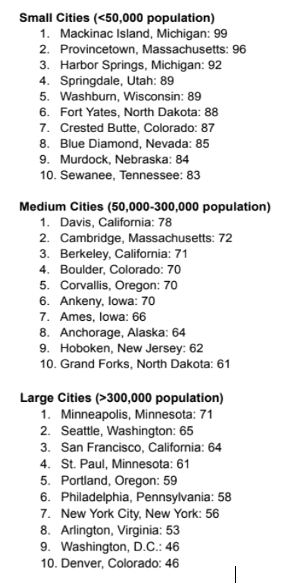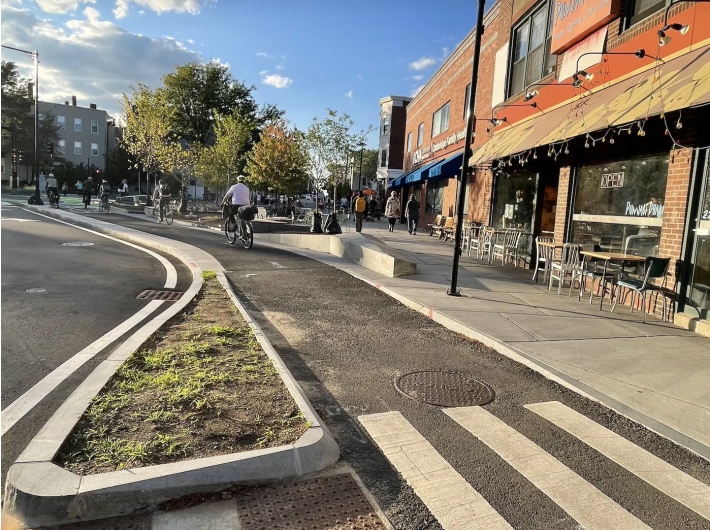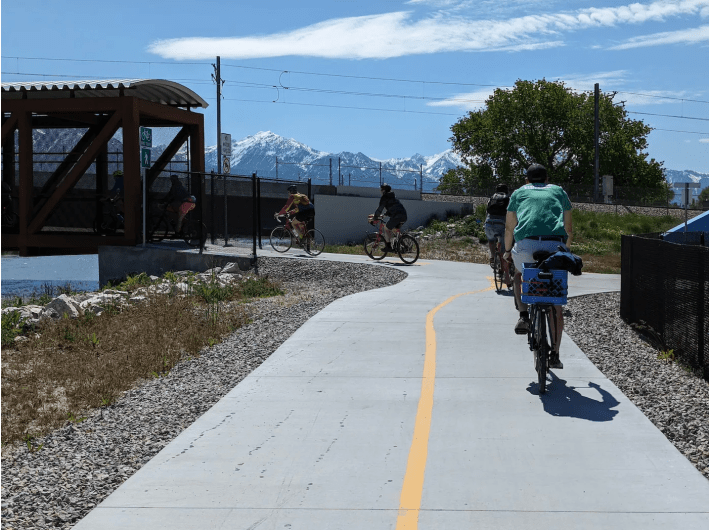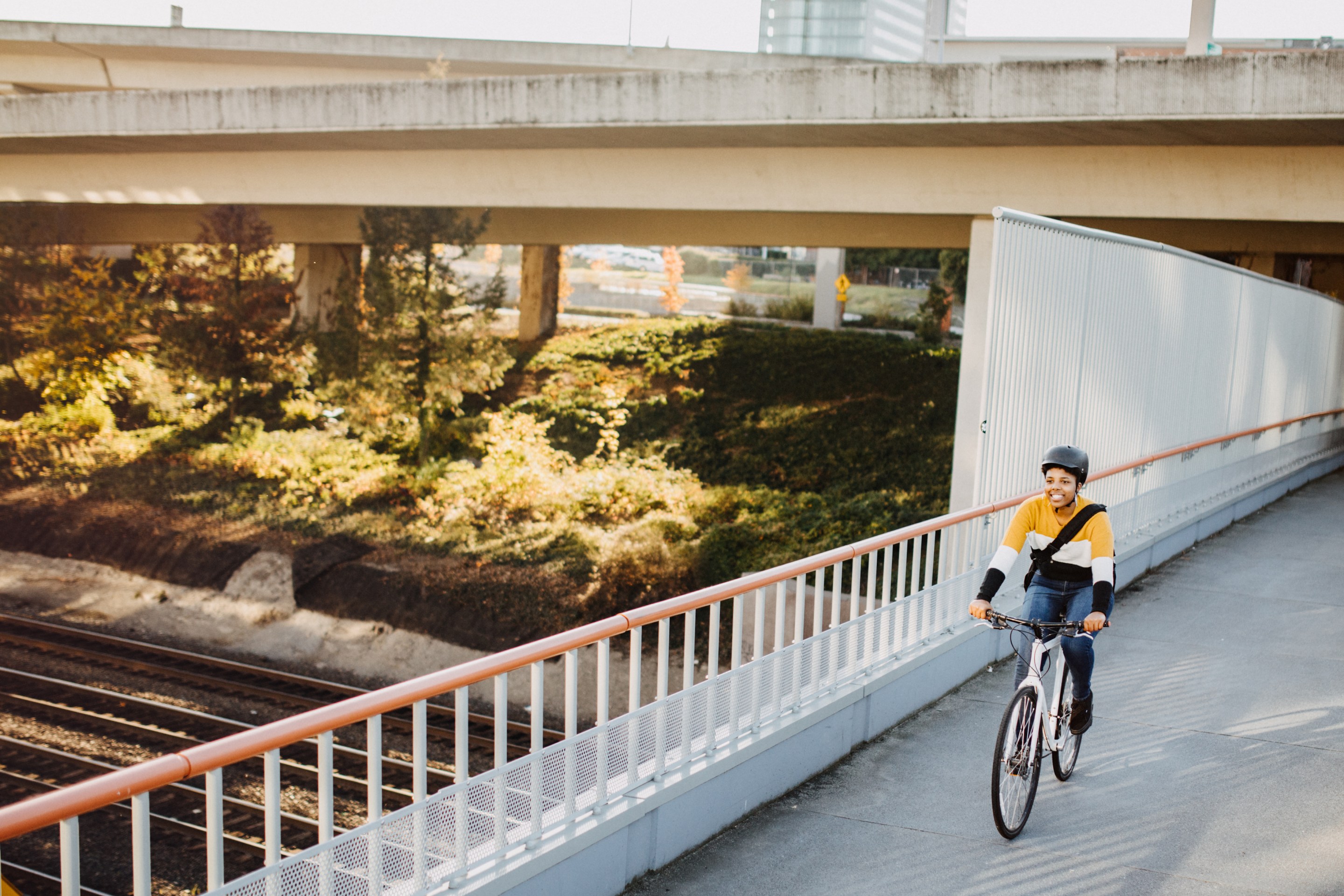When cities hit a certain level of bikeability, they enter a virtuous cycle where more infrastructure inspires more residents to become rider-advocates who, in turn, advocate for more infrastructure — and this year, more U.S. cities than ever have reached that critical tipping point, a top advocacy group says.

A whopping 183 American communities achieved a score of 50 or higher on PeopleForBikes annual City Ratings this year, up from just 33 in 2019. The means 183 communities have scored at least half of the available points on the group's signature "SPRINT" rubric that includes such measures as protected bike lanes, safe intersection treatments, and reduced speed limits that are unlikely to kill a cyclist in the event of a crash, among other factors.
And when a city clears that 50-point threshold, the authors of the ratings say that its local bike culture has firmly taken root — and that every new roadway improvement will inspire more improvements, rather than a fierce fight against a car-dominated status quo.
"Once you've hit 50, your city probably has a pretty good low-stress bike network," said Martina Haggerty, the senior director of local innovation at PeopleForBikes. "[That's] not to say that there aren't still improvements to be made [but it] probably means that more people are riding bikes in those communities because they feel safe and comfortable. And when more people start riding bikes, those people tend to become advocates for better bike infrastructure and for pro-bike policies, which, [in turn,] will get more people riding."
Haggerty stressed that cities of "all shapes and sizes" can and have achieved that 50-point benchmark, and all the positive momentum that comes with it. Top-ranking Mackinaw Island, Mich., for instance, scored a predictable 99 on the PeopleForBikes scale because officials banned cars more than a century ago. But even medium-sized cities like Davis, Calif. and Cambridge, Mass. scored in the 70s thanks to decades of bike-friendly policies and far more recent mandates to accelerate bike lane construction. Minneapolis, meanwhile, claimed the crown of the most bike-friendly large city in America, followed closely by Seattle and San Francisco.

This year's rankings, though, reveals for the first time just how fast these destinations have improved their biking scores over the years — and how, at a certain point, those wins become self-perpetuating. And if other cities can keep pushing past political opposition and using policy to systematize bikability improvements, Haggerty is confident they can catch the same updraft.
"We want to measure progress over time and benchmark cities against one another, so they can understand where they rank against other, similar cities — or maybe the cites they aspire to be more like," adds Haggerty, who notes that international communities are included in the rankings, too for this reason. "Our only goal is to encourage more cities to build out low-stress bike networks that are more appropriate for people of all ages, and ages and abilities to ride on."
Unfortunately, that kind of positive feedback loop is still pretty rare in car-dependent America. Of the 2,300 communities on PeopleForBike's list, just under 8 percent scored above the 50-point mark, with much of the other 92 percent trapped in an active transportation death spiral where a lack of safe roads increasingly scares people off riding, which in turn dissolves the political will to build bike lanes for riders who just aren't there. Large Texas cities Arlington, El Paso and Corpus Christi all scored under 10 points, and even bike-saturated Chicago only scored nine points (though our sister site StreetsblogCHI objected to that ranking).
"Sometimes you hear an argument like, 'Why should we build more bike infrastructure? Nobody's biking there today,'" she added. "[But that's like saying], 'Nobody's swimming across that dangerous river with sharks in it to get to the other side [so why] build a bridge there?'"

Haggerty argues, though, that the centrifugal force of the unbikability doom loop isn't necessarily as strong as its counterpart, and that "for the most part, most cities are working towards creating safer streets and better having better bike trails and better connectivity in their network." That's evident in cities like Philadelphia, which climbed from a score of just under 40 in 2019 to just under 58 today, rivaling bike-mecca Portland, Ore. which scored just under 59.
PeopleForBikes acknowledges that some advocates might disagree with how their city stacks up against the competition, as well as the ratings' focus on static factors like road width and bike lane mileage, rather than more dynamic stats like ridership and actual average driver speeds. Still, she hopes that on aggregate, this year's ratings will prove that once the uphill battle has been fought long enough, there is a better biking future on the other side — and at some point, we might find our former opponents riding alongside us.






